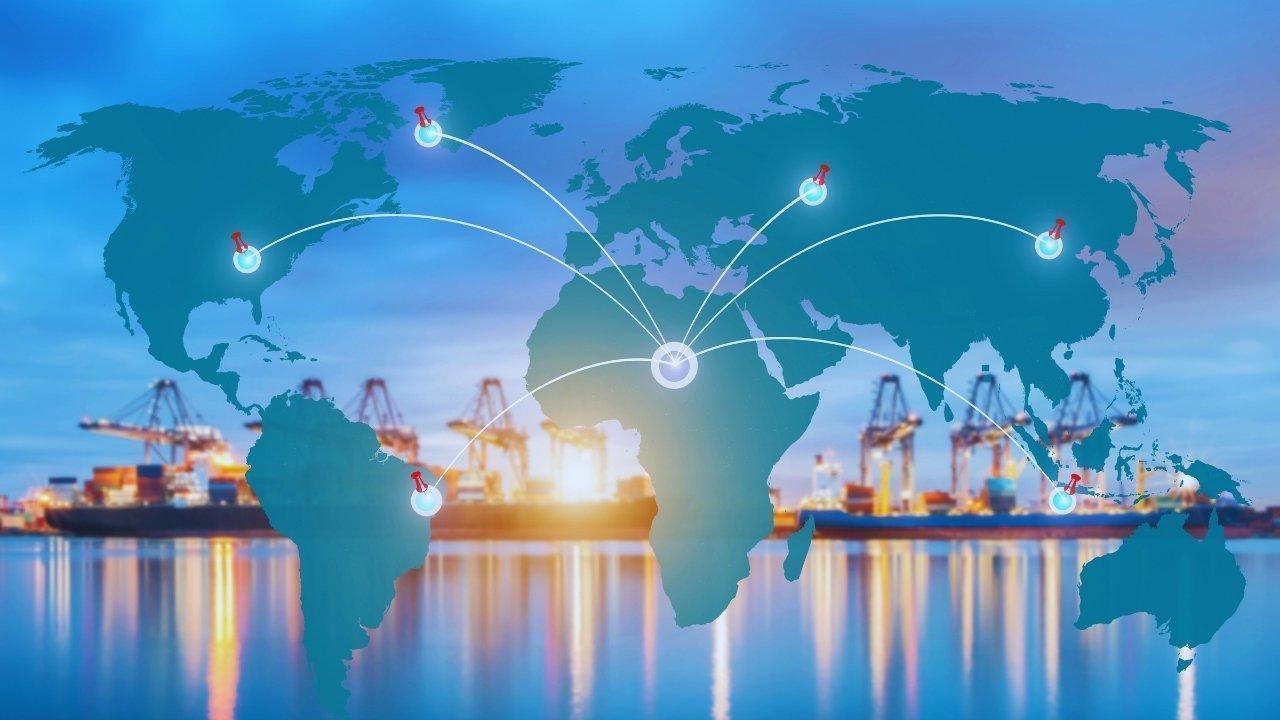
Join 10k+ people to get notified about new posts, news and tips.
Do not worry we don't spam!

Post by : Anis Farhan
Global trade has entered a transformative phase. From the imposition of tariffs to the formation of new alliances, countries are recalibrating their economic strategies to navigate a rapidly changing geopolitical landscape. The rise of emerging markets, shifts in production hubs, and increasing tensions among major economies have amplified the importance of trade policy.
Understanding these dynamics is essential for businesses, policymakers, and investors. Decisions made today regarding tariffs, trade agreements, and economic alliances can have far-reaching consequences for global supply chains, market access, and geopolitical stability.
Tariffs—taxes imposed on imported goods—remain a powerful tool in global commerce. Countries use tariffs to protect domestic industries, influence trade balances, or exert political leverage. Over the past decade, high-profile tariff disputes have highlighted both the potential benefits and pitfalls of this approach.
1. Economic Protection vs. Market Access
Tariffs can shield local industries from foreign competition, giving domestic producers time to innovate or scale. However, they also raise costs for consumers and businesses reliant on imported materials. For instance, tariffs on steel and aluminum have had ripple effects on automotive and construction industries worldwide, increasing costs and affecting pricing strategies.
2. Strategic Tariffs as Political Tools
Tariffs are increasingly used as leverage in diplomatic negotiations. Beyond economic objectives, they signal political intent, influence bargaining power, and even serve as deterrents against policy actions by other nations. Such strategies, while effective in some cases, risk triggering retaliatory measures and trade wars.
3. Impact on Global Supply Chains
Modern supply chains are highly integrated. Tariffs in one country can reverberate across continents, affecting production costs, delivery times, and inventory management. Companies must now consider tariff risks when choosing suppliers, manufacturing locations, and logistical routes.
While tariffs can act as barriers, alliances and trade agreements are the lubricant that keeps global commerce flowing. Recent years have seen the formation of both bilateral and multilateral agreements designed to facilitate trade, standardize regulations, and foster economic cooperation.
1. Regional Trade Blocs
Regional alliances such as the European Union, the Comprehensive and Progressive Agreement for Trans-Pacific Partnership (CPTPP), and the African Continental Free Trade Area (AfCFTA) exemplify how countries collaborate to reduce trade barriers. These agreements create large integrated markets, attract investment, and encourage cross-border economic growth.
2. Bilateral Trade Agreements
Countries increasingly pursue targeted bilateral agreements to secure specific advantages, such as technology sharing, agricultural exports, or preferential tariffs. Such agreements provide flexibility and precision, allowing nations to protect strategic interests while expanding market access.
3. Strategic Economic Partnerships
Beyond traditional trade deals, countries are forming partnerships that combine investment, infrastructure development, and technology transfer. Examples include digital trade agreements and renewable energy collaborations, which extend beyond goods and services to strategic economic sectors.
The global trade landscape is undergoing notable shifts influenced by geopolitical tensions, technological advances, and changing consumer patterns:
1. Diversification of Supply Chains
Trade disruptions caused by geopolitical events and the COVID-19 pandemic have accelerated efforts to diversify supply chains. Companies are seeking alternative sourcing options, nearshoring production, and investing in resilient logistics networks to reduce dependency on single markets.
2. Rise of Emerging Markets
Countries in Asia, Africa, and Latin America are playing a more central role in global trade. Their growing domestic markets, abundant labor, and favorable investment climates make them attractive trade partners. As a result, global trade flows are shifting away from traditional power centers.
3. Digital Trade Expansion
E-commerce, digital services, and data flows are redefining trade. Nations are negotiating digital trade rules, data localization standards, and cybersecurity measures as part of modern trade agreements. This expansion highlights the convergence of technology and commerce.
4. Environmental Considerations
Sustainability is increasingly influencing trade decisions. Carbon border adjustments, green tariffs, and eco-labeling standards are shaping market access, encouraging cleaner production practices, and altering competitive dynamics.
Trade is inseparable from geopolitics. Nations leverage economic influence to secure strategic objectives, using trade as a form of soft power.
1. Strategic Tariffs and Retaliation
Major powers have repeatedly used tariffs to achieve policy goals, from protecting domestic industries to countering geopolitical adversaries. Retaliatory measures often follow, creating cycles of escalation with global consequences.
2. Technology and Intellectual Property
Trade disputes increasingly revolve around technology transfer, intellectual property rights, and cybersecurity. Access to advanced technologies, semiconductors, and digital infrastructure has become central to economic power. Countries wield trade policies to influence technological leadership and strategic autonomy.
3. Currency and Trade Balances
Currency manipulation and trade deficits are also key tools in economic strategy. Nations adjust exchange rates, negotiate favorable trade balances, or incentivize domestic production to strengthen their economic positions.
4. Soft Power through Trade Diplomacy
Beyond tariffs and agreements, countries use trade to build alliances, extend influence, and project power. Investments in infrastructure, foreign aid linked to trade, and market access initiatives enhance diplomatic leverage and strengthen strategic partnerships.
1. U.S.-China Trade Tensions
The U.S.-China trade relationship remains a critical example of how tariffs, technology disputes, and political strategy intersect. Ongoing negotiations, restrictions on technology exports, and retaliatory tariffs illustrate the complexity of modern economic power plays.
2. African Continental Free Trade Area (AfCFTA)
AfCFTA represents a transformative regional initiative, creating the world’s largest free trade area by number of countries. By reducing tariffs and harmonizing regulations, it enables African nations to enhance intra-continental trade, attract investment, and strengthen bargaining power globally.
3. European Union Carbon Border Adjustments
The EU’s implementation of carbon border adjustments exemplifies the intersection of trade and sustainability. By imposing costs on high-emission imports, the EU encourages greener production globally while safeguarding domestic industries from unfair competition.
Global trade shifts present both challenges and opportunities for businesses and investors:
Risk Management: Companies must assess exposure to tariffs, regulatory changes, and geopolitical tensions. Diversifying suppliers and markets reduces vulnerability.
Strategic Planning: Long-term business strategies must consider trade agreements, alliances, and regional policies. Agile adaptation is critical.
Investment Opportunities: Emerging markets offer growth potential through expanding middle classes, technological adoption, and infrastructure development. Investors can capitalize on favorable trade conditions and strategic partnerships.
Sustainability Integration: Businesses increasingly need to align operations with environmental trade standards to access global markets.
The future of global trade will be shaped by the interplay of economics, politics, and technology. Key trends include:
Digital and E-Commerce Trade Expansion: Governments and businesses must adapt to the digital economy, implementing regulations and infrastructure for cross-border online transactions.
Sustainable Trade Policies: Environmental standards will influence competitiveness, market access, and investment flows.
Regional Trade Integration: Countries will increasingly leverage regional blocs to enhance collective bargaining power and create resilient economic networks.
Innovation-Driven Trade: Technology, AI, and automation will redefine production, logistics, and market strategies, creating new opportunities for agile players.
Businesses, investors, and policymakers must remain vigilant, flexible, and forward-thinking to thrive in this evolving landscape.
Global trade in 2025 is defined by complexity, dynamism, and strategic maneuvering. Tariffs, alliances, and economic power plays are no longer isolated mechanisms but interconnected elements of a broader global strategy.
Emerging markets, digital trade expansion, and sustainability considerations are reshaping the rules of engagement. Companies and nations that understand these trends, anticipate shifts, and adapt strategically will be best positioned to benefit from the new trade paradigm.
The era of passive trade participation is over. In a world of rapid change, proactive strategy, robust risk management, and geopolitical awareness are essential for navigating the future of global commerce.
This article is intended for informational purposes only. It does not constitute investment, trade, or legal advice. Readers should consult qualified professionals and conduct independent research when making business or financial decisions.










India Wins First Women’s World Cup 2025 Title
India lifts its maiden Women’s World Cup 2025 title! Harmanpreet Kaur’s team stuns South Africa in a

Manuel Frederick, 1972 Olympic Bronze Goalkeeper, Dies at 78
Manuel Frederick, a member of India’s 1972 Olympic bronze hockey team, has died in Bengaluru at 78 a

Muhammad Hamza Raja Wins IFBB Pro Card Puts Pakistan & UAE on Global Stage
Pakistani bodybuilder Muhammad Hamza Raja earns IFBB Pro Card in Czech Republic, showcasing Dubai’s

Shreyas Iyer’s Recovery Underway After Spleen Laceration in Sydney ODI
Shreyas Iyer is recovering after a spleen laceration sustained while taking a catch in the Sydney OD

Qatar Ready to Host FIFA U-17 World Cup 2025 in Aspire
Qatar confirms full readiness to host the FIFA U-17 World Cup 2025 from November 3–27, with world-cl

Wolvaardt’s 169 Sends South Africa Into Women’s World Cup Final
Laura Wolvaardt’s 169 powered South Africa to a 125-run semi-final win over England, booking a place